Find out what to go out and look at this month
Planets:
In August, Mercury remains in the constellation of Leo (The Lion) for the entire month. However, it transitions into the Sun’s glare in the second week and reappears in the morning sky at the end of August. Venus moves from Leo towards constellation of Virgo (The Virgin) by the end of August, and can be seen low in the west in the early evening sky. Mars travels from constellation of Taurus (The Bull) to constellation of Gemini (The Twins) by the end of the month, and is visible in the early morning sky. Mid-month, on August 15th, Mars will pass close to Jupiter, allowing both planets to be seen in the same telescope eyepiece.
Jupiter can be observed throughout August in the early morning sky within one of the horns of Taurus during nighttime. Saturn remains visible in the middle of the night, positioned between the constellations of Aquarius (The Water-Bearer) and Pisces (The Fish). Uranus rises in the early morning sky in the constellation of Taurus, above the Pleiades star cluster. Finally, Neptune can be found during the middle of the night, located between the top fish in the constellation of Pisces and the tail of the constellation of Cetus (The Sea-Monster).
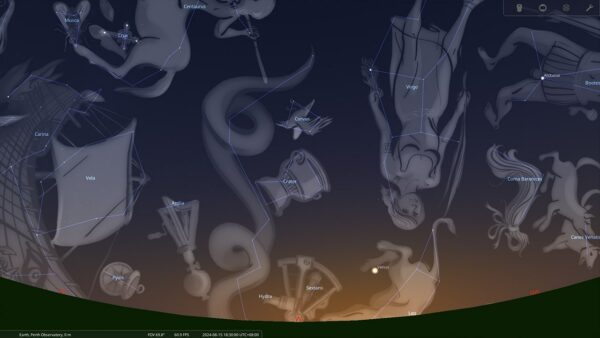
|
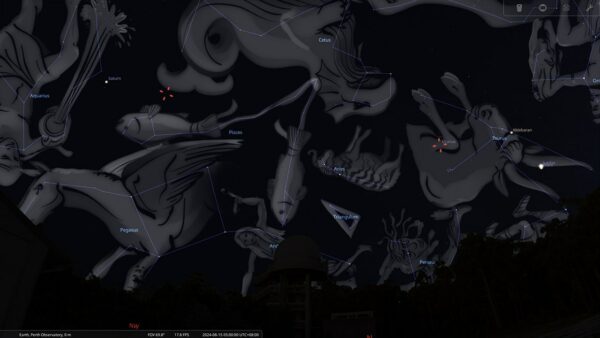
|
| Planet | When It Rises Or Sets |
|---|---|
| Mercury | At the start of August, it sets at 07:34 pm (AWST), and by the end of the month, it’ll rise at 05:41 am (AWST) |
| Venus | At the start of August, it sets at 07:52 pm (AWST), and by the end of the month, it’ll sets at 07:47 pm (AWST) |
| Mars | At the start of August, it rises at 02:51 pm (AWST), and by the end of the month, it’ll rise at 02:23 am (AWST) |
| Jupiter | At the start of August, it rises at 03:23 am (AWST), and by the end of the month, it’ll rise at 01:46 am (AWST) |
| Saturn | At the start of August, it rises at 08:35 pm (AWST), and by the end of the month, it’ll be visible the whole night |
| Uranus | At the start of August, it rises at 02:01 am (AWST), and by the end of the month, it’ll rise at 00:05 am (AWST) |
| Neptune | At the start of August, it rises at 09:27 pm (AWST), and by the end of the month, it’ll rise at 07:26 pm (AWST) |
Conjunctions And Occultations:
Conjunctions involve object(s) in the Solar System and/or more distant objects, such as a star. It’s an apparent phenomenon in which multiple objects which aren’t close together appear close in the sky and it’s caused by the observer’s perspective.
In an occultation, an object passes across the line of sight between an observer and another object. A solar eclipse is an occultation of the Sun by the Moon.
- 03/08/24 – Conjunction of Mars, Jupiter, and Aldebaran (Where to look)
- 06/08/24 – Conjunction of The Moon, Mercury, Venus, and Regulus (Where to look)
- 10/08/24 – Conjunction of The Moon, and Spica (Where to look)
- 14/08/24 – Conjunction of The Moon, and Antares (Where to look)
- 15/08/24 – Conjunction of Mars, and Jupiter (Where to look)
- 20/08/24 – Conjunction of The Moon, and Saturn (Where to look)
- 26/08/24 – Conjunction of The Moon, and Pleiades (Where to look)
- 28/08/24 – Conjunction of The Moon, Mars, Jupiter and Elnath (Where to look)
- 30/08/24 – Conjunction of The Moon, Castor, and Pollux (Where to look)
Astronomical Events This Month:
The Perseids:
The eagerly anticipated Perseids meteor shower is nearly upon us, reaching its peak on the night of the 12th/13th of August. This captivating display is primarily visible in the Northern Hemisphere and takes its name from the constellation of Perseus (The slayer of Medusa and the rescuer of Andromeda), the apparent source of these meteors. The Perseids shower remains active from mid-July to the end of August. Observers in the Northern Hemisphere can typically witness a meteor rate exceeding 100 meteors per hour during this period. However, for those of us in Australia, the chances of observing the Perseids are limited to the northern part of the country. To catch a glimpse, one must venture out around 5 am when the meteors will appear very low on the horizon in the northern direction.
Unfortunately, this year’s viewing experience will be bad, as we’ll have a Full Moon in the sky during the optimal viewing time. This will hinder the enjoyment of the meteor shower.
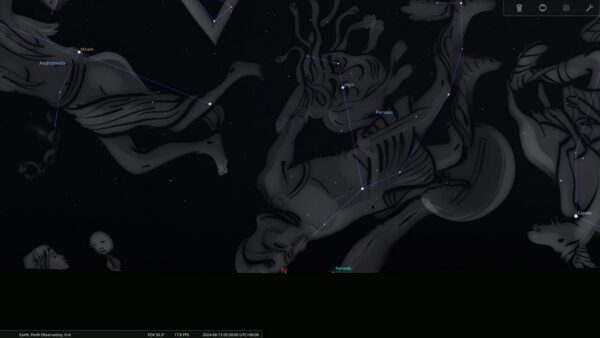
|
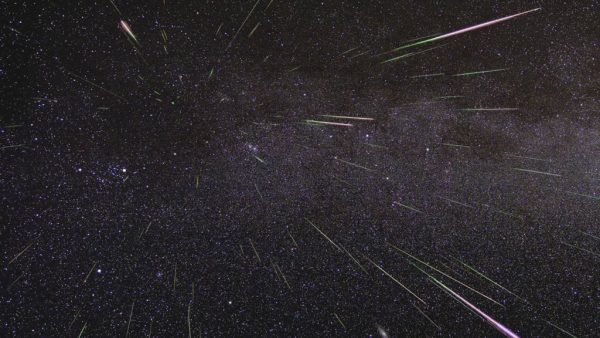
|
Things To Look At This Month:
Albireo:
Albireo, a remarkable double star located in the constellation of Cygnus (The Swan), lies approximately 390 light-years away from our vantage point. Serving as the “beak star” in the constellation Cygnus the Swan, Albireo’s name has an intriguing origin, stemming from various mistranslations between Greek, Arabic, and Latin languages. It offers a captivating sight, particularly to modest telescopes, showcasing a wide double star with striking colour contrast.
Albireo can be found in the northern sky, but it remains visible for only a few months during the late winter and spring seasons. The primary star of Albireo exhibits a warm yellow/amber hue, while its companion star displays a distinct blue/green colouration. Although the primary star is also a binary system, it is too close and dim to be discerned without the aid of large telescopes and exceptional observing conditions. Remarkably, these stars orbit around each other over a span of approximately 100,000 years.
The primary star boasts impressive characteristics, with approximately five times the mass and 1,200 times the brightness of our Sun. However, it possesses a cooler surface temperature of approximately 4,100 Kelvin. On the other hand, the secondary star weighs about 3.2 times the mass of our Sun and shines with a brightness roughly 230 times greater. With a surface temperature of approximately 12,000 Kelvin, it exhibits a hotter nature compared to its primary counterpart.
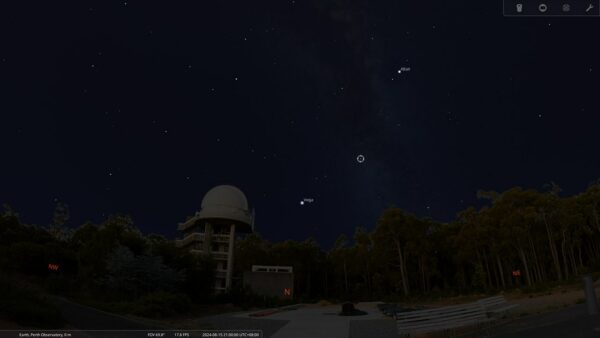
|
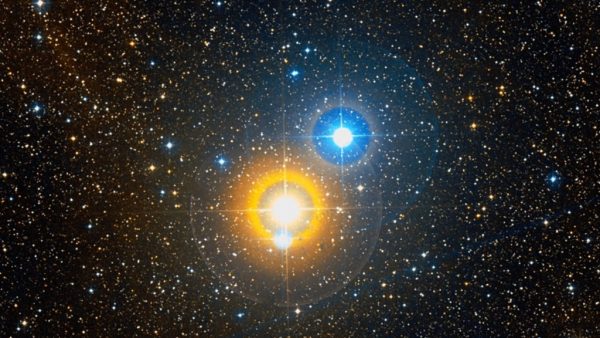
|
Dumbbell Nebula:
The Dumbbell Nebula, also known as Messier 20 (M20) and NGC 6514, is a captivating planetary nebula situated in the constellation of Vulpecula (The Little Fox). It possesses an age ranging between 9,000 and 15,000 years. Unlike the Orion Nebula, which is a stellar nursery, the Dumbbell Nebula represents the later stages in the life cycle of a star that has shed a shell of material through a nova-like explosion. This expelled gas shell is illuminated by the intense ultraviolet radiation emitted by the remaining star, resulting in an emission nebula surrounding the expanding shell of gases. Planetary nebulae typically exhibit a spherical shape and are relatively small in size, which often gives them the appearance of planetary discs when observed through smaller telescopes. These phenomena have a relatively short lifespan of a few tens of thousands of years before gradually fading and becoming more diffuse as they move away from their progenitor star.
Spanning nearly 3 light-years in diameter, the Dumbbell Nebula is situated at a comparable distance to the Orion Nebula, approximately 1,360 light-years away. However, visually, it appears much smaller, measuring about one-fourth the diameter of a Full Moon. The Dumbbell Nebula presents an intriguing prolate spheroid shape when observed from our perspective along the plane of its equator. At its core lies a white dwarf star, which serves as the progenitor of the nebula. This white dwarf is approximately 5% larger in diameter and 50% more massive than our Sun, making it larger than most known white dwarfs. The inner region of the Dumbbell Nebula exhibits a rugged appearance, adorned with numerous knots and structures, as revealed in high-resolution images captured by the Hubble Space Telescope in 2001. These substructures, ranging in size from 20 to 60 million kilometres (equivalent to fractions of an astronomical unit), harbour a mass of approximately three times that of the Earth.
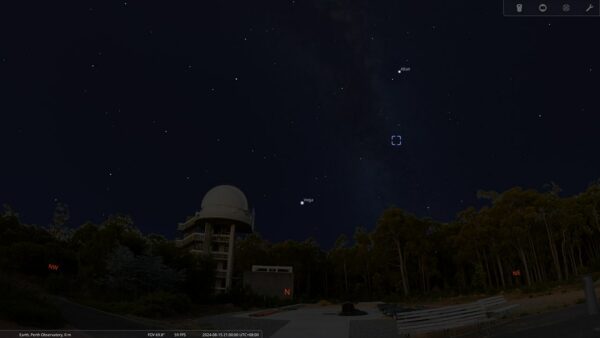
|
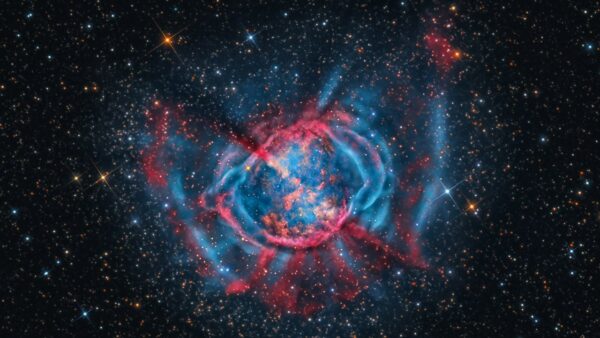
|
Scorpius Globular Cluster:
The Scorpius Globular Cluster, also known as Messier 4 (M4) and NGC 6121, is among the closest globular clusters to Earth, positioned approximately 7,200 light-years away. It resides in close proximity to the star Antares within the constellation of Scorpius (The Scorpion) and is characterized by its relatively loose structure, making it one of the smallest globular clusters with a diameter of 55 light-years. The cluster, estimated to be 12.2 to 13 billion years old, contains around 100,000 stars arranged in a roughly spherical configuration. Notably, it exhibits an intriguing central bar composed of stars, a feature first recognized by William Herschel in 1783.
Situated within the halo of our galaxy, the Scorpius Globular Cluster occupies the spherical region encircling the pancake-shaped galactic disk. While it orbits the centre of the galaxy, it resides outside the plane of the galactic disk. It was initially discovered by Philippe Loys de Chéseaux in 1746, and M4 holds the distinction of being the first globular cluster ever resolved into individual stars using a telescope. Through binoculars, it appears as a diffuse patch of light, but even a 4-inch telescope can resolve some of its brightest stars. Its apparent size is slightly smaller than that of the full moon.
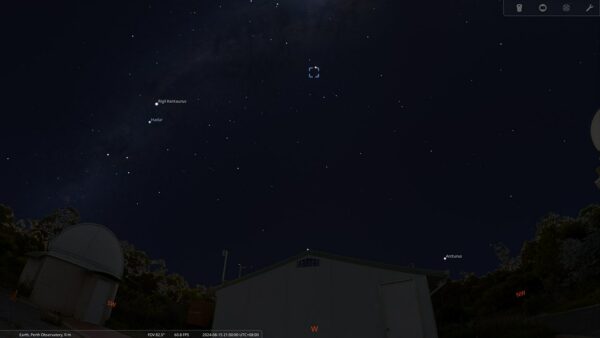
|
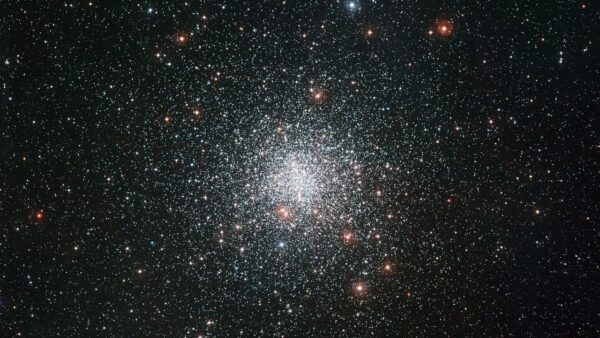
|
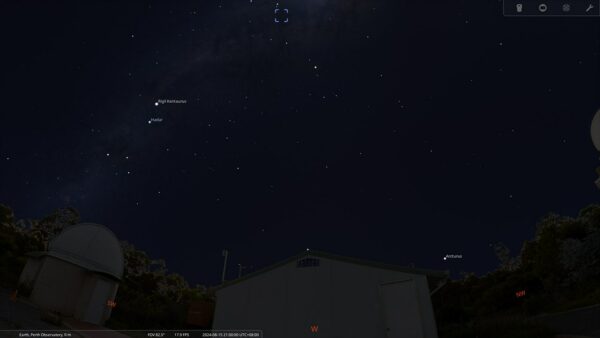
|
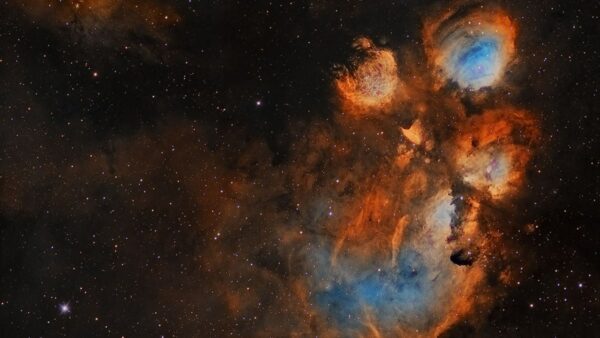
|
Phases Of The Moon:
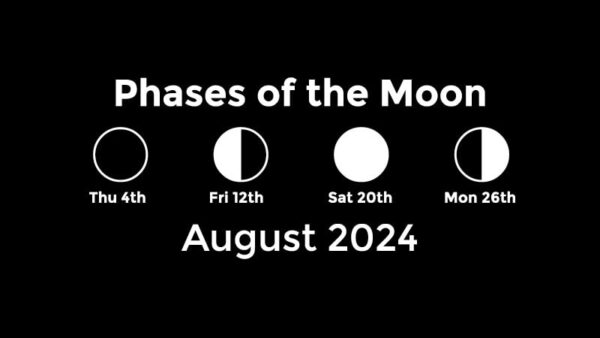

Newsletter Sign Up
Sign up today to our quarterly newsletter
View more
Rate Us On TripAdvisor
Let others know of your experience
View more
We Want You!
Become an awesome volunteer
View more

